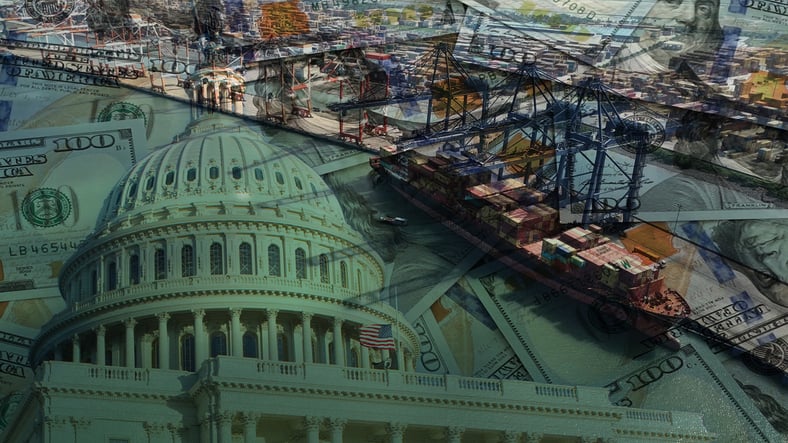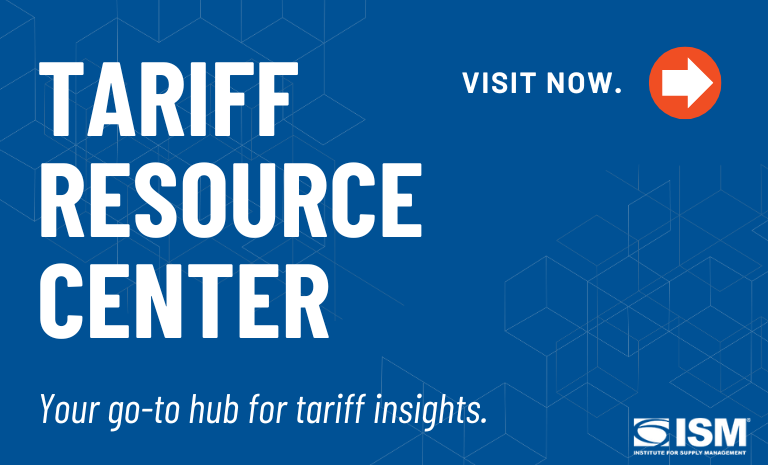U.S. Economic Growth Hinges on Reversing ‘Bad Direction’

While tariffs have dominated the global economic conversation — and were cited as a key factor in U.S. gross domestic product (GDP) contracting in the first quarter — a recession can be avoided if the narrative shifts toward tax cuts and other pro-business policies.
That was the conclusion of Bill Adams, the Dallas-based chief economist at Comerica Bank, who said in a LinkedIn Live broadcast last week, “The U.S. economy is pointed in a bad direction, but we haven’t gone very far in that direction.”
Adams projected slower growth over the next two quarters before the economy stabilizes, but much of that is dependent on (1) a pivot on tariffs and (2) interest-rate relief from the U.S. Federal Reserve (Fed). Comerica’s current GDP forecast for this year calls for growth of about 1.25 percent, he added.
Many companies rushed to source from other countries to get ahead of the Trump administration’s flurry of tariffs, which have impacted products from Mexico and Canada, steel and aluminum, Chinese imports (a 145-percent levy) and other imports (10 percent across the board). Adams said that buying patterns in the coming months will help determine the amount of product on shelves, consumer confidence and economic growth.
“Companies might be able to get around paying (tariffs) on Chinese supplies for two or three months. … While companies are playing the waiting game, we could see shortages of goods on retail shelves, as well as shortages of components in manufacturing. That might lead to more of a slowdown in construction activity in the next couple of months,” Adams said.
As a result, there could be “a return to some of the shortages and supply chain challenges that we had during the (coronavirus) pandemic,” he said. “Hopefully, we don’t get that, but it becomes more of a risk the longer we stay in this period of heightened uncertainty, in particular where tariff rates feel really high and will stay high in the longer run, which gives companies a reason to try to wait it out.”
Key Indicators to Watch
The LinkedIn Live broadcast was before Friday’s federal jobs data that showed a higher than expected 177,000 positions added in April, which provided some relief and caused many analysts, Adams included, to project that the Fed will hold rates steady at its meeting this week. He projects as many as three quarter-point rate cuts in the second half of the year.
The unemployment rate — which Adams said is his favorite economic indicator — was unchanged at 4.2 percent in April. “You can benchmark the unemployment rate versus what we’ve seen in previous expansions or recessions, and what the unemployment rate is telling us right now is that the economy is in good shape,” he said.
“The unemployment rate has moved up since the beginning of 2023, but it’s still a labor market where most people who want jobs have them, and businesses that want to attract, retain and develop their workforce have to leverage to keep their employees. So, it’s a manageable economy for businesses and workers.”
Employment growth, however, figures to slow, he said, due in part to the Trump administrations’ tighter immigration enforcement, leading to fewer workers entering the labor force.
Adams also cited the Manufacturing ISM® Report On Business® as a key indicator: “We like to look at it as an alternative to government data and as a cross check of it. It is a really good leading indicator of where the (federal) statistical data on spending and production are likely to be in two or three months.”
The Manufacturing ISM® Report On Business®, released last week, showed U.S. factory activity in contraction for a second consecutive month in April, with an “alarming” Production Index reading. ISM’s Services report came out on Monday, showing that the sector making up most of the U.S. economy is showing resilience, at least for now.
Tariffs and Preparing for Contingencies
Adams expects many companies to invest in domestic manufacturing capabilities and shorter supply chains, but he added that such projects could be slowed or paused if economic and trade-policy uncertainty persists.
Tariff policy for the rest of the year, Adams reiterated, remains the hole card for the economy. Some businesses have curtailed hiring plans and capital expenditures. Consumers accelerated purchases of automobiles and other durable goods in late 2024 and early this year, which may result in a decline in demand for these products in the future.
He advises having contingency plans for different tariff outcomes and paying attention to longer-term trends.
“Amid the headline noise about what’s going on right now, there's still a lot of really exciting things going on in the economy,” Adams said. “Newer technologies are going to continue to spread across the economy. Many businesses this year are finding new and productive applications of AI (artificial intelligence) that are already changing how they do business and serve their customers.
“Clearly, there's a lot to pay attention to (regarding) risk. But keep an eye on where the economy is going to be in two to five years — and think about how to prepare for that.”

